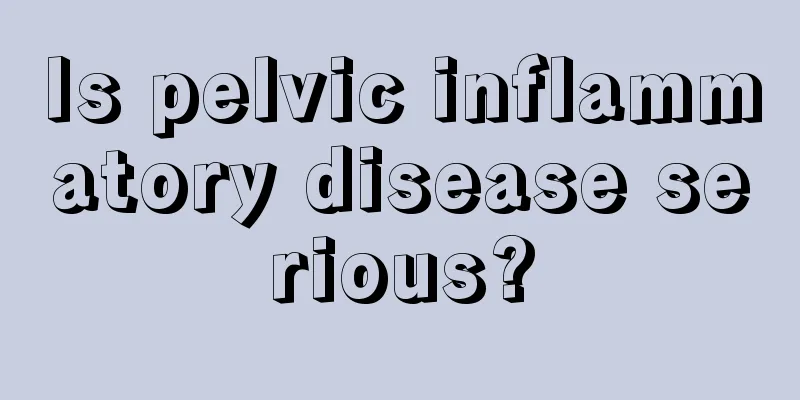Is pelvic inflammatory disease serious?

|
Pelvic inflammatory disease is a common gynecological disease in women. It is generally believed to be an inflammation caused by bacterial infection. Under normal circumstances, when bacteria invade, the organs around the uterus, pelvis, peritoneum and other parts will have defensive resistance. Only when the resistance of the relevant body is insufficient can inflammation occur. Below we focus on its symptoms and harmfulness, and provide information on two treatment methods. 1. Types and symptoms of pelvic inflammatory disease 1. Acute pelvic inflammation The symptoms are lower abdominal pain, fever, increased vaginal discharge, and persistent abdominal pain that worsens after activity or sexual intercourse. If the condition is severe, there may be chills, high fever, headache, and loss of appetite. 2. Chronic pelvic inflammation It is caused by the failure to thoroughly treat acute pelvic inflammatory disease or the patient's poor physical condition and prolonged course of the disease. The symptoms of chronic pelvic inflammatory disease are lower abdominal distension, pain and lumbar and sacral soreness, which are often aggravated by fatigue, after sexual intercourse, and before and after menstruation. The second is abnormal menstruation and irregular menstruation. When the disease lasts for a long time, some women may experience symptoms of neurasthenia such as lack of energy, general discomfort, and insomnia. It often takes a long time to heal and recurs repeatedly, leading to infertility and fallopian tube pregnancy, seriously affecting women's health. 2. Treatment of pelvic inflammatory disease 1. Medication Antibiotics are the main treatment for acute pelvic inflammatory disease, including multiple routes of administration such as intravenous infusion, intramuscular injection or oral administration. A broad spectrum of antibiotics should be used in combination with anti-anaerobic drugs, and attention should be paid to the sufficiency of the course of treatment. It can also be combined with traditional Chinese medicine treatment to achieve better results. 2. Physical therapy The benign stimulation of warmth can promote local blood circulation in the pelvic cavity. Improve the nutritional status of tissues and enhance metabolism to facilitate the absorption and disappearance of inflammation. Commonly used methods include shortwave, ultrashort wave, iontophoresis (various drugs such as penicillin, streptomycin, etc. can be added), wax therapy, etc. Traditional Chinese medicine also has the method of treating stains with Chinese medicine wrapping. Through the above, we understand the clinical manifestations of acute and chronic pelvic inflammation. If not treated in time, it may lead to other complications, from repeated attacks to mental depression, which can seriously affect fertility and high fever, causing serious harm to health and life. Therefore, related symptoms must be checked and treated as soon as possible. In addition to using medications, physical-assisted treatment can also be carried out with instruments. |
<<: Causes of irregular menstruation in women
>>: Symptoms of pelvic inflammatory disease and adnexitis
Recommend
What are the methods to tighten breasts?
In today's society, people tend to pay more a...
What should I do if my child snores?
Author: Wang Guixiang, Chief Physician, Beijing C...
What are the advantages and disadvantages of Sheung IUD?
There are many contraceptive methods around us at...
Swollen and painful finger joints during late pregnancy
After pregnancy, there will be changes in hormone...
A woman dreams of washing her hair
What does it mean to dream about a woman washing ...
Different reasons for abdominal pain in the second month of pregnancy
The second month of pregnancy is the peak period ...
Daily nutritional recipes for pregnant women
Mothers all know that the diet of pregnant mother...
Early pregnancy test paper powder
A patient said that she took a pregnancy test tod...
What to eat for ovarian cysts? The relevant people must eat right
Women who unfortunately suffer from ovarian cysts...
What are the pelvic floor muscle rehabilitation training?
The pelvic floor muscle strength is a very import...
What does it feel like to breastfeed?
I often hear many breastfeeding mothers say that ...
How to repair pelvic floor muscles
For many female friends, childbirth will cause ce...
What causes women to have many wrinkles?
Wrinkles are really a cruel thing for women. Wrin...
How to treat rheumatism during confinement?
We all know that the damage to women's bodies...









